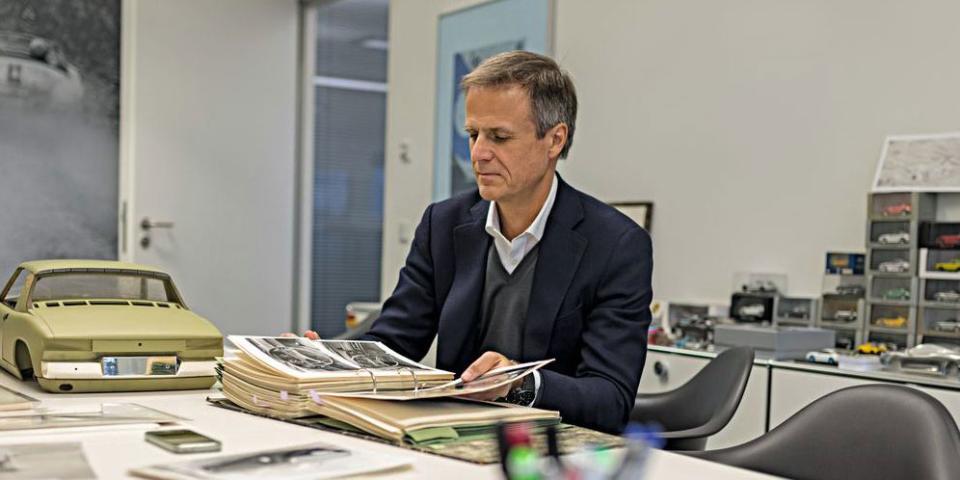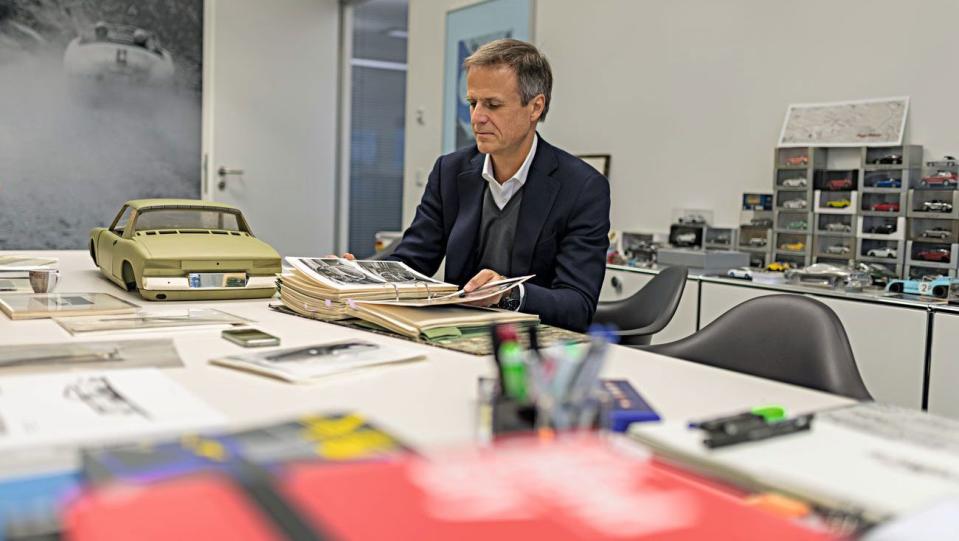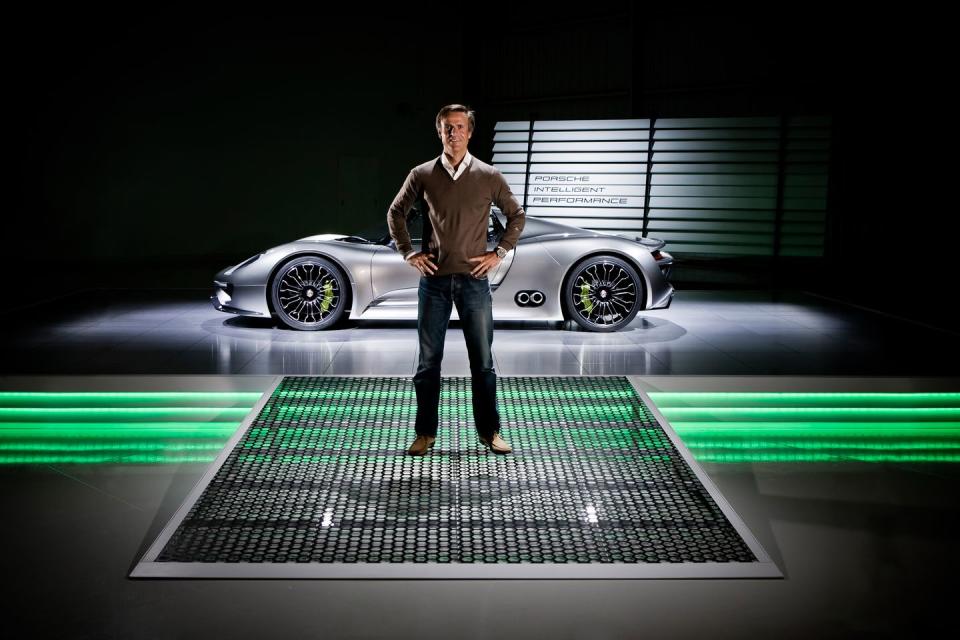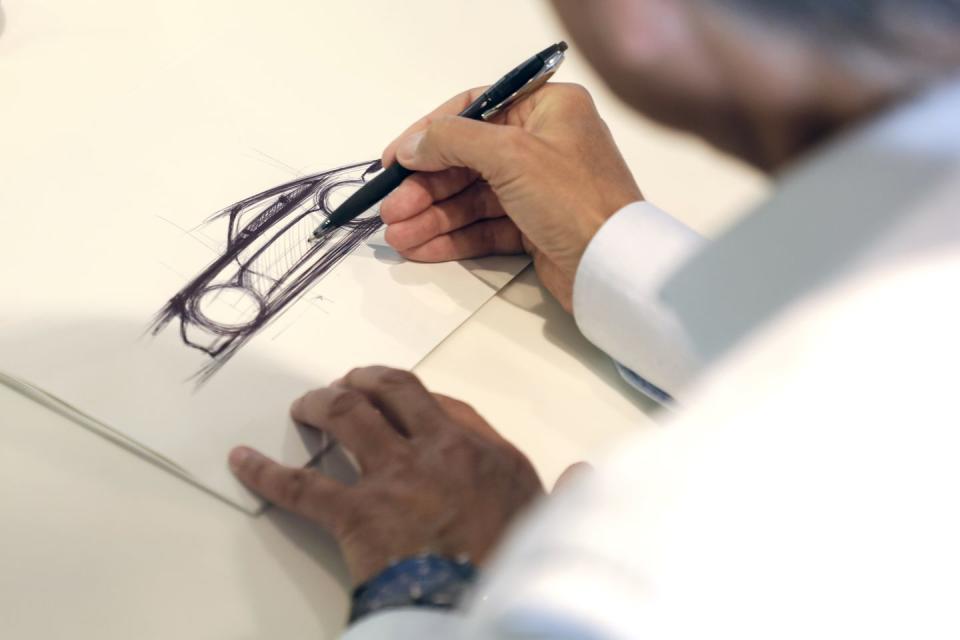Michael Mauer Isn't Worried About Elevating the Porsche 911


Michael Mauer dips his pinky in a cup of coffee, rubs the bottom of a small, white mug, and presses it down on a piece of paper to make a perfect circle. The head of design at Porsche uses the coffee stain as a way to outline the wheels of the 911 he’s sketching. If he doesn’t use his coffee, he uses his whole arm, moving it in a circular motion like a machine, to draw the wheels.
“You could then even use the coffee, and it would be a brown car,” he says, shading the car’s body with his wet, coffee-covered pinky.
Mauer has been the head of Porsche design since 2004. He’s only the third person to do so after Ferdinand Alexander Porsche, and the first project he was responsible for was the 997 GT3. He also led the design efforts for the Macan and the 918 Spyder.
While we’re talking, he’s constantly looking down, still drawing.
“Are you sketching some more stuff right now?” I ask.
“My problem is always continue the sketching,” he says, laughing. “Even there, I see things that I could do better, so I just start with the next one.”
We connected like most people do these days, over Zoom. The following conversation has been lightly edited for clarity. To watch Mauer give pointers on how to draw a Porsche 911, click here.

What are some of the challenges that come with working with such an iconic shape? And what was the plan with the 992 generation in moving forward?
The 911 is a special product since it is representing the core of our company, of our brand, of our design DNA, and strategy refers to the 911 and the design elements of that car. So, whatever we do on the 911 is basically giving an indication of what we’re doing with the rest of the product line. The biggest challenge with the 911 is always to ask yourself: how far do you go with the new model to show that it is the new 911? So, we introduce new design elements, still keep the relation to the predecessor, just to find the right balance. And I used to say that with the new 911 you have to see first of all that it is a 911, but as well you have to see that it is the new one. And with the 992, we tried to let the car look even more athletic. For example, the rear fender, the rear wheel arch, the fender flare is much more expressive, more sporty, so we wanted to give the car an even more sporty appeal.

With upcoming models, like the GT3 and GT2, how do you see moving forward and bettering the 992’s design?
Again, you have these derivatives that are based on the base 911, and again, same discussion there. You already have a few iconic design cues that are linked to a turbo, and we talk about the rear spoiler, and we talk about the air intake in front of the rear wheel. And the GT3 always had pretty iconic design cues. So, there you have the same challenge. You have to continue to work with these elements but always give new elements, add new elements as well to keep the balance between predecessor and next generation.
Can you draw every 911 generation?
No (laughing). Let’s say I could most likely, yes. You could say that each 911 generation had certain elements that were very typical for these cars. You know, the angle of the front lamps was much more upright in the first generation. The angle of the windscreen was more upright. Then you add the so-called G model. You had this kind of black rubber elements on the bumpers. So, there were a few certain elements, but I think I could meet the character of these cars, yeah, but not in each and every detail.

 Yahoo Autos
Yahoo Autos 